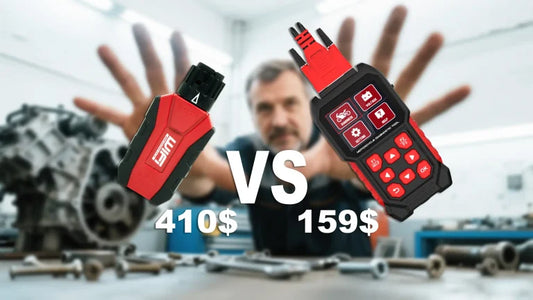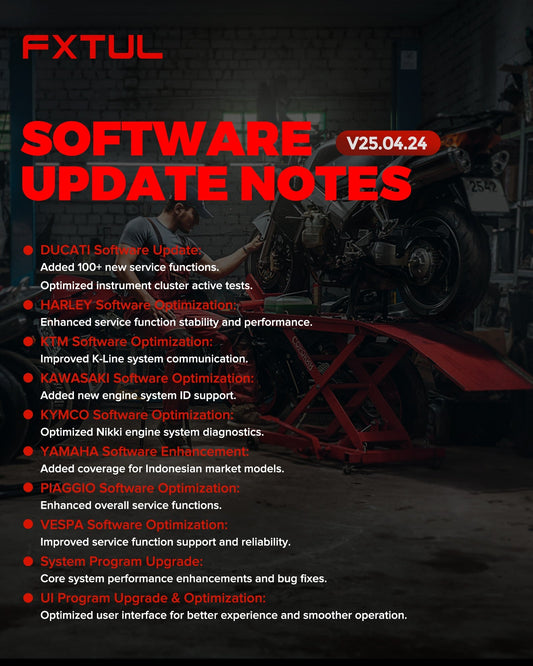Hey, riders! Is that little wrench icon on your dashboard lighting up again? Don't rush to push your bike to the shop and cringe at the bill. Changing your oil and oil filter is hands down the simplest and most rewarding DIY maintenance project for your motorcycle—no contest!
Today, I'll walk you through every step with detailed instructions and plenty of real-life photos. All it takes is 30-60 minutes and the cost of a meal to give your bike a fresh burst of energy.
I. Why is it necessary to change engine oil and oil filters?
Engine oil is the lifeblood of your engine, responsible for lubrication, cleaning, cooling, and rust prevention. Over time, however, oil degrades and becomes contaminated, while filters become clogged. Regular replacement significantly extends engine lifespan and ensures smooth power delivery. It is generally recommended to change oil every 3,000-5,000 kilometers or every six months (please refer to your owner's manual for specific guidelines).
II. Tool and Material Checklist
Before beginning, prepare the following items to ensure a smoother process:
• Tools:
1. Socket wrench or box wrench (for the drain plug, commonly 17mm or 19mm)
2. Oil filter wrench (bowl-type, plier-type, or belt-type—must match your filter size! This is essential!)
3. Funnel
4. Container for used oil (bucket or old oil drum, capacity must exceed your engine's oil volume)
5. Gloves (to prevent burns and oil stains)
6. Torque wrench (highly recommended to prevent stripping the bolt threads)
7. Rags or paper towels
• Materials:
1. Suitable new engine oil (Consult your owner's manual to confirm the correct oil type and viscosity, e.g., 10W-40)
2. New oil filter (Ensure the model matches your motorcycle)
3. New drain plug gasket (Strongly recommended for every change; costs just a few cents and effectively prevents leaks)
III. Procedure
Step 1: Warm Up the Engine!
Warning: Never perform this procedure on a cold engine! Start the motorcycle and let it idle for 3-5 minutes to warm the oil and improve its flow. This ensures old oil and contaminants are fully drained. Then turn off the engine and disengage the ignition.
Step 2: Locate Components and Prepare
· Drain plug: Located at the bottom of the engine oil pan, typically the largest bolt.
· Oil filter: Usually on the side of the engine, a cylindrical metal canister.
· Position the waste oil container directly beneath the drain plug.
· Wear gloves!
(Insert image here: Arrow pointing to drain plug at engine bottom and oil filter on side)
Step 3: Drain the Old Oil
1. Loosen the drain plug counterclockwise with a suitable wrench.
2. Finish unscrewing by hand, then quickly remove the plug to let the old oil flow into the container. Watch out for hot oil!
3. Allow the oil to drain completely—this takes about 5-10 minutes. You can proceed to the next step during this time.
(Insert a short video or GIF here: showing the old oil draining out)
Step 4: Replace the Oil Filter
1. Position the container under the oil filter housing, which may also contain some old oil.
2. Use an oil filter wrench to unscrew the old oil filter counterclockwise.
3. Important: Apply a thin layer of fresh oil to the rubber seal of the new filter. This ensures proper sealing and prevents difficulty removing it later.
4. Hand-tighten the new filter until the seal contacts the housing.
5. Hand-tighten it an additional 3/4 turn (approx. 0.7-0.8 Nm). NEVER use a wrench to force it tight! This will damage the seal and cause oil leaks.
(Insert image here: showing how to apply new oil to the new filter's seal)
Step 5: Add New Oil and Check
1. Tighten the drain plug (if using a torque wrench, follow manual specifications, typically 25-30 N·m).
2. Insert a funnel into the oil filler port on the engine side.
3. Slowly pour in 90% of the recommended capacity of new oil (e.g., if the manual specifies 3L, add 2.7L first).
4. Replace the oil cap, start the engine, and let the new oil circulate at idle for 1-2 minutes. The oil warning light should turn off, and the new oil will fill the new oil filter.
5. Shut off the engine and wait 1 minute for the oil to drain back into the oil pan.
6. Check the oil level using the dipstick (ensure the vehicle is level and upright). The oil level should be between the minimum and maximum marks on the dipstick. If low, add a small amount of oil until the level is correct.
7. Inspect for oil leaks around the drain plug and oil filter.
IV. Final Steps
· Properly Dispose of Waste Oil: This is a crucial step! Pour the collected waste oil into a sealed container (such as an old motor oil bottle).
· Take it to an auto repair shop, gas station, or designated waste oil collection point. They typically accept it free of charge. Protecting the environment is everyone's responsibility!
V. Final Tips and Warnings
· Safety First: Always wear gloves when working on a hot engine to avoid burns.
· Torque Matters: Over-tightening the drain plug can strip the threads, leading to costly repairs; under-tightening causes leaks. A torque wrench is the best investment.
· Small Gasket, Big Leak: A few-cent gasket prevents major headaches—always replace it.
· If in doubt: Stop immediately and seek professional help if you have any questions during the process. The joy of DIY lies in safety and success.
Congratulations! Not only have you performed flawless maintenance on your beloved bike, but you've also saved a significant amount of money. Now, hop on and enjoy the smooth, refreshed ride!




